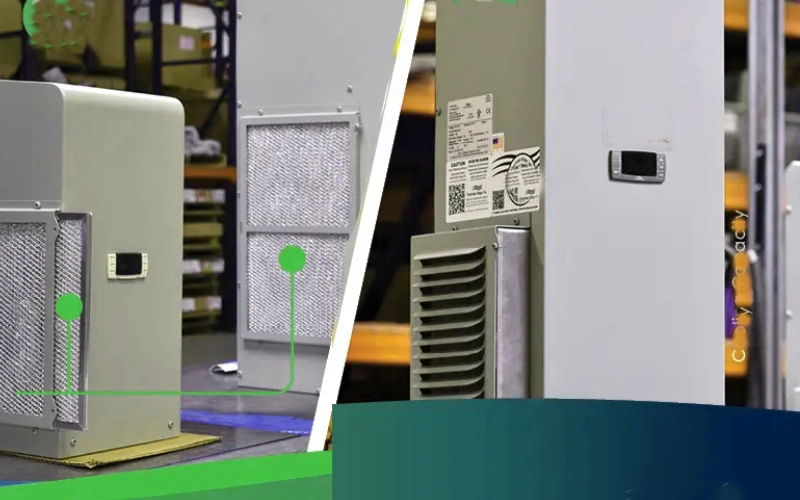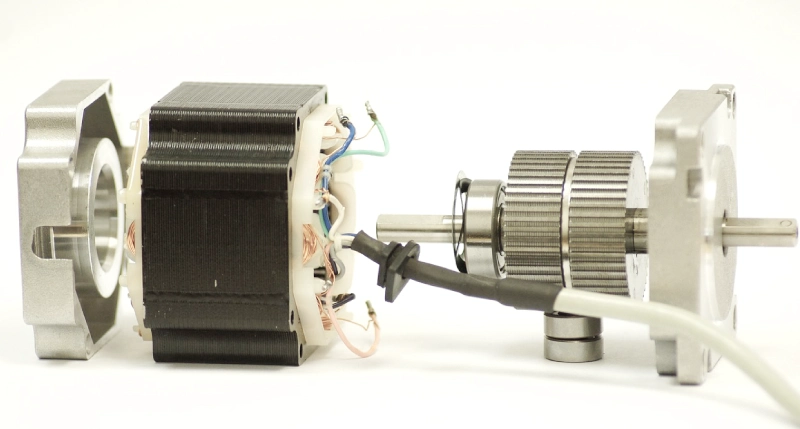Electrical enclosures often contain various components for wiring, and among the most common are distribution blocks and terminal blocks. While both serve to organize and connect wires, they have distinct purposes and characteristics. Understanding their differences is crucial for proper electrical design and safe installation.
This blog post will delve into the fundamental distinctions between distribution blocks and terminal blocks. We’ll explore their primary functions, typical applications, and key features to help you choose the right component for your specific electrical needs.
What is a Distribution Block?
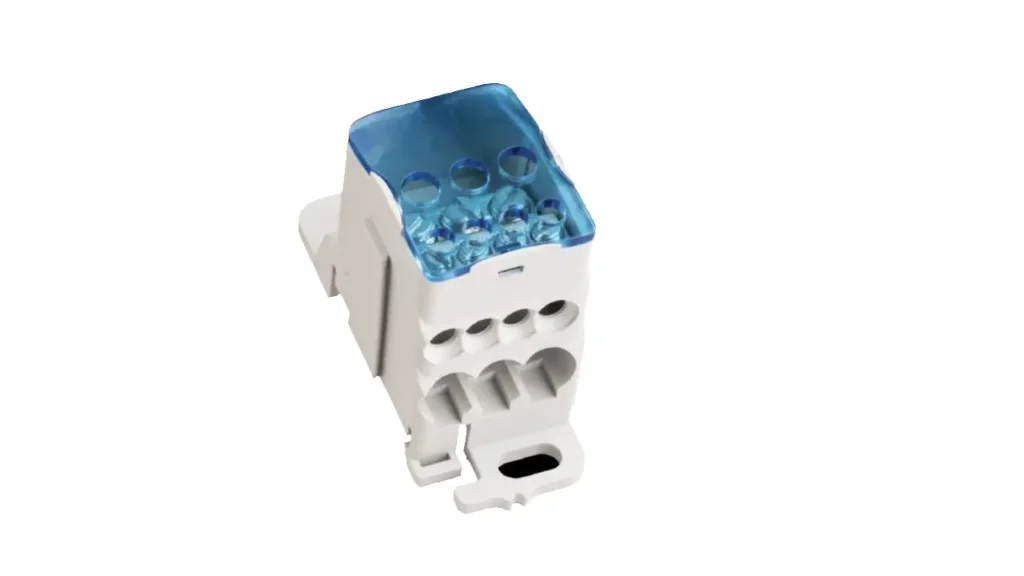
A distribution block is an electrical component that takes a single power input and splits it into multiple outputs. It’s used to efficiently distribute power from a central source to several devices or circuits, simplifying wiring and reducing the number of individual connections needed in an electrical panel or system.
What is a Terminal Block?
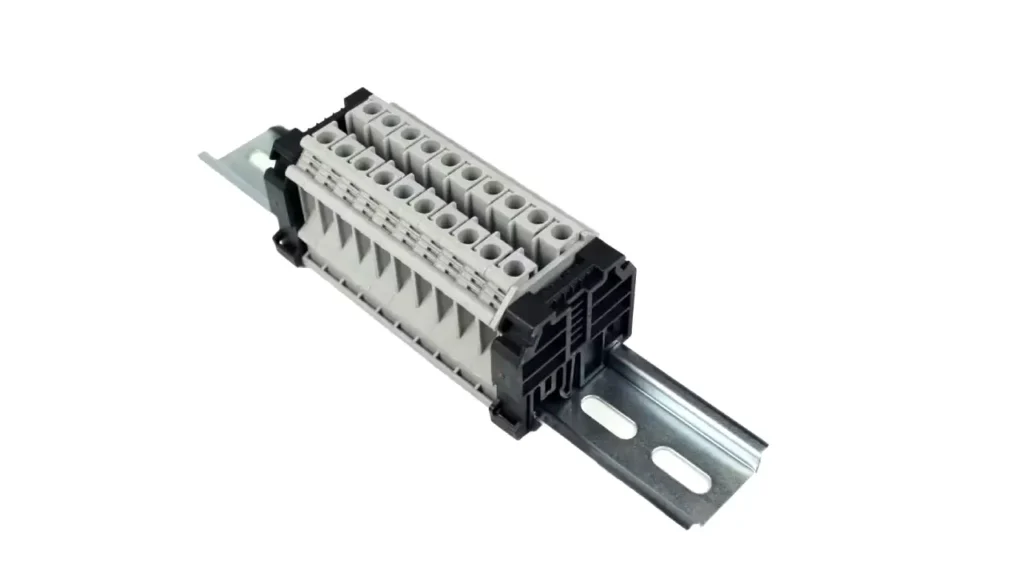
A terminal block is an insulated modular connector designed to securely join two or more electrical wires. It provides a safe and organized method for terminating and connecting wires within a circuit, simplifying installation, maintenance, and troubleshooting in various electrical and electronic systems.
Distribution Block vs Terminal Block
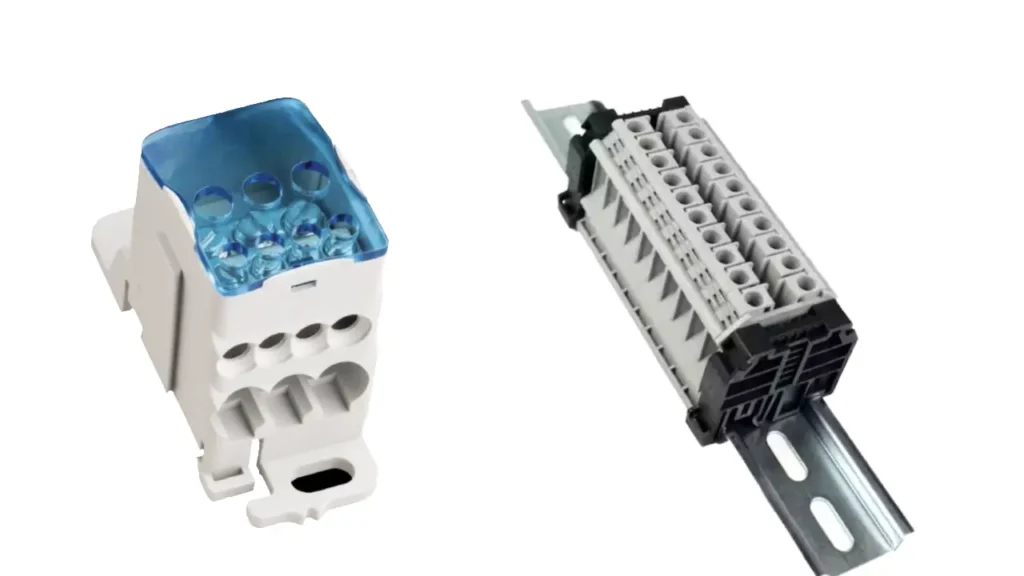
In electrical systems, both distribution blocks and terminal blocks play crucial roles in managing wire connections. While they may appear similar, their fundamental purposes and applications differ significantly. Understanding these distinctions is vital for proper circuit design and installation, ensuring safety and efficiency.
Distribution Block
A distribution block is essentially a power splitter. It takes a single electrical input and divides it into multiple outputs, allowing power to be distributed to several different circuits or components from one source. This is particularly useful in applications where a main power feed needs to be branched out to various loads.
Distribution blocks often feature a robust design with high current ratings, accommodating thicker gauge wires for power distribution. They are commonly used in automotive systems, audio installations, and industrial control panels where a clean and efficient method of power splitting is required.
Terminal Block
A terminal block, on the other hand, is designed to securely terminate and organize individual wires within a circuit. It provides a structured and insulated point for wires to connect, making it easier to manage complex wiring, troubleshoot issues, and perform maintenance. They typically consist of an insulated frame with multiple clamping points for wires.
Terminal blocks are ubiquitous in control cabinets, machinery, and building automation systems. They facilitate neat and organized wiring, reducing the risk of short circuits and making it simpler to modify or expand existing electrical installations.
5 Aspects to Compare between Distribution Block and Terminal Block
Functionality
Distribution blocks are primarily designed for power distribution. Their main purpose is to split a single incoming power line into several outgoing lines, effectively acting as a hub for power delivery to multiple loads or sub-circuits. This makes them ideal for applications where a common power source needs to feed various components.
Conversely, terminal blocks are focused on wire termination and organization. They provide a secure and insulated point for individual wires to connect, facilitating the management of complex wiring schemes and enabling easy disconnections and reconnections for maintenance or troubleshooting.
Number of Connections
Distribution blocks typically feature one input terminal and multiple output terminals. The ratio of inputs to outputs is often 1:many, reflecting their role in spreading power from a single source across several destinations. This design optimizes for efficient power splitting within a system.
Terminal blocks offer a variety of configurations, often with a 1:1 ratio per connection point (one input, one output) or a commoning bar for multiple connections to a single point. They are designed for individual wire connections and often come in multi-way strips to accommodate numerous discrete connections.
Application
Distribution blocks find common application in scenarios requiring efficient power branching. Examples include main power distribution in vehicles, large audio systems where amplifiers and other components draw from a central power source, or industrial machinery requiring multiple power feeds from one supply.
Terminal blocks are widely used for general wiring connections, signal routing, and control circuitry. They are prevalent in control panels, junction boxes, and machinery where neat, organized, and easily accessible wire terminations are essential for system reliability and maintenance.
Current Rating
Due to their role in power distribution, distribution blocks are typically designed to handle higher current ratings. They must safely manage the total current flowing to all connected loads, often requiring robust construction and larger conductor sizes to prevent overheating and ensure stable power delivery.
Terminal blocks, while capable of handling a range of currents, are often specified for individual circuit current requirements. Their ratings vary widely depending on the application, from low-current signal wiring to higher-current power connections, but generally focus on the current capacity of each individual wire connection rather than a cumulative distributed load.
Mounting
Distribution blocks are often designed for surface mounting or specific enclosure integration, emphasizing secure and stable placement given the power they manage. Their mounting style facilitates robust connections and accessibility for power distribution.
Terminal blocks are commonly designed for DIN rail mounting, a standardized system that allows for quick and organized installation within electrical enclosures. This modular mounting simplifies assembly, expansion, and rearrangement of wiring within control cabinets and other industrial settings.
| Aspect | Distribution Block | Terminal Block |
|---|---|---|
| Functionality | Splits single input into multiple outputs (power distribution) | Terminates and organizes individual wires |
| Connections | Typically 1 input to many outputs | 1 input to 1 output per terminal, often multi-way strips |
| Application | Power branching (e.g., automotive, audio, industrial power) | General wiring, signal routing, control circuitry |
| Current Rating | Designed for higher overall current distribution | Rated for individual wire/circuit current |
| Mounting | Surface mounting, enclosure integration | Primarily DIN rail mounting |
How to Choose Distribution Block and Terminal Block
Choosing the right distribution block or terminal block is crucial for ensuring the safety, efficiency, and longevity of your electrical system. A careful evaluation of your specific application requirements and environmental conditions is essential to make an informed decision that prevents issues like overheating or loose connections.
For distribution blocks, consider these aspects:
- Current and Voltage Ratings: Ensure the block’s current and voltage capacity significantly exceeds your system’s maximum expected load to safely handle power distribution and prevent damage or failures from overloads or surges.
- Number of Outputs: Determine how many individual circuits or components need power from the single input source. Choose a distribution block with enough outputs to accommodate all your current and potential future connections.
- Mounting Options: Consider where the block will be installed. Options like surface mounting, panel mounting, or DIN rail mounting will influence the ease of installation and integration into your existing electrical setup.
- Environmental Protection: If the block will be exposed to moisture, dust, or harsh temperatures, select one with appropriate IP ratings (e.g., IP65, IP66) to ensure durability and reliable operation in challenging conditions.
- Wire Gauge Compatibility: Verify that the distribution block can securely accommodate the specific wire gauges you intend to use for both the main input and the various output connections, ensuring proper contact and safety.
When selecting terminal blocks, keep these factors in mind:
- Current and Voltage Ratings: Match the terminal block’s ratings to the individual circuit’s expected current and voltage, ensuring it can safely handle the load without overheating or compromising insulation, ideally with a safety margin.
- Wire Size and Type: Confirm the terminal block’s compatibility with your wire’s gauge (AWG or mm²) and type (solid or stranded). Different clamping mechanisms are optimized for specific wire characteristics, ensuring a secure connection.
- Connection Method: Choose between screw clamp, spring clamp, push-in, or stud/bolt connections. Each method offers different advantages in terms of ease of use, vibration resistance, and suitability for specific wiring scenarios.
- Mounting Type: DIN rail mounting is common for industrial panels, offering modularity and organization. PCB-mount or barrier strip options are available for direct board connections or simpler applications, influencing overall design.
- Number of Poles/Levels: Select the appropriate number of individual connection points (poles) and consider multi-level blocks for high-density wiring, optimizing space and simplifying complex circuit layouts within an enclosure.
Conclusion
While both distribution and terminal blocks manage electrical connections, their roles differ. Distribution blocks split a single input into multiple outputs, ideal for power distribution. Terminal blocks, however, primarily serve to terminate and organize individual wires within a circuit, offering a neat and secure connection point.
The key distinction lies in their function: one distributes power, the other organizes individual wire terminations. This dictates their application in various electrical systems, from industrial controls to building automation.
For reliable and high-quality wholesale terminal blocks, consider Linkwell Electrics.

